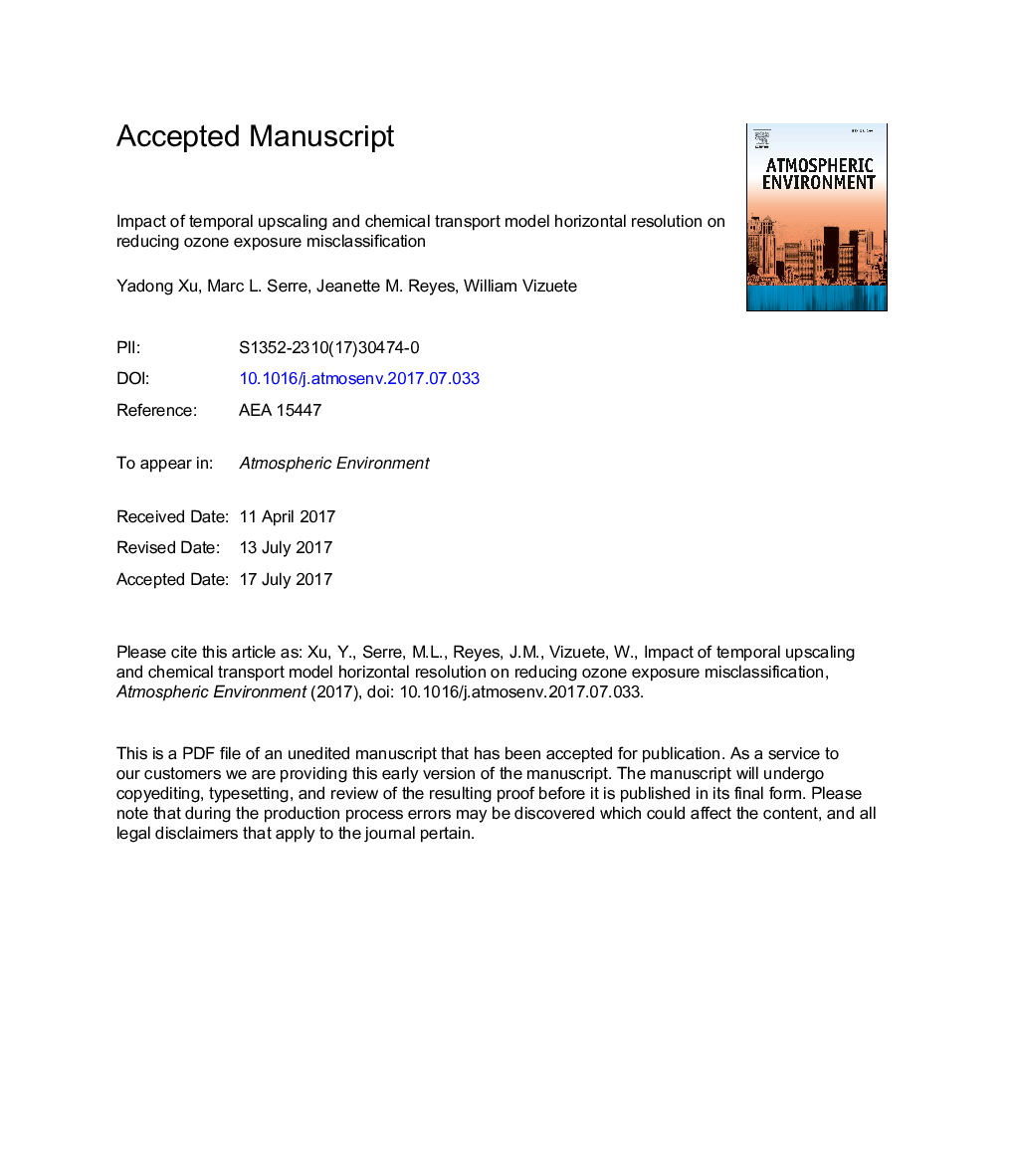| کد مقاله | کد نشریه | سال انتشار | مقاله انگلیسی | نسخه تمام متن |
|---|---|---|---|---|
| 5752860 | 1620308 | 2017 | 19 صفحه PDF | دانلود رایگان |
عنوان انگلیسی مقاله ISI
Impact of temporal upscaling and chemical transport model horizontal resolution on reducing ozone exposure misclassification
ترجمه فارسی عنوان
تاثیر اندازه رزولوشن عمودی و حمل و نقل شیمیایی در مقایسه با طبقه بندی نامناسب قرار گرفتن در معرض ازن
دانلود مقاله + سفارش ترجمه
دانلود مقاله ISI انگلیسی
رایگان برای ایرانیان
کلمات کلیدی
حداکثر آنتروپی بیزی ازن، همجوشی داده ها، مدل حمل و نقل شیمیایی،
موضوعات مرتبط
مهندسی و علوم پایه
علوم زمین و سیارات
علم هواشناسی
چکیده انگلیسی
We have developed a Bayesian Maximum Entropy (BME) framework that integrates observations from a surface monitoring network and predictions from a Chemical Transport Model (CTM) to create improved exposure estimates that can be resolved into any spatial and temporal resolution. The flexibility of the framework allows for input of data in any choice of time scales and CTM predictions of any spatial resolution with varying associated degrees of estimation error and cost in terms of implementation and computation. This study quantifies the impact on exposure estimation error due to these choices by first comparing estimations errors when BME relied on ozone concentration data either as an hourly average, the daily maximum 8-h average (DM8A), or the daily 24-h average (D24A). Our analysis found that the use of DM8A and D24A data, although less computationally intensive, reduced estimation error more when compared to the use of hourly data. This was primarily due to the poorer CTM model performance in the hourly average predicted ozone. Our second analysis compared spatial variability and estimation errors when BME relied on CTM predictions with a grid cell resolution of 12Â ÃÂ 12Â km2 versus a coarser resolution of 36Â ÃÂ 36Â km2. Our analysis found that integrating the finer grid resolution CTM predictions not only reduced estimation error, but also increased the spatial variability in daily ozone estimates by 5 times. This improvement was due to the improved spatial gradients and model performance found in the finer resolved CTM simulation. The integration of observational and model predictions that is permitted in a BME framework continues to be a powerful approach for improving exposure estimates of ambient air pollution. The results of this analysis demonstrate the importance of also understanding model performance variability and its implications on exposure error.
ناشر
Database: Elsevier - ScienceDirect (ساینس دایرکت)
Journal: Atmospheric Environment - Volume 166, October 2017, Pages 374-382
Journal: Atmospheric Environment - Volume 166, October 2017, Pages 374-382
نویسندگان
Yadong Xu, Marc L. Serre, Jeanette M. Reyes, William Vizuete,
